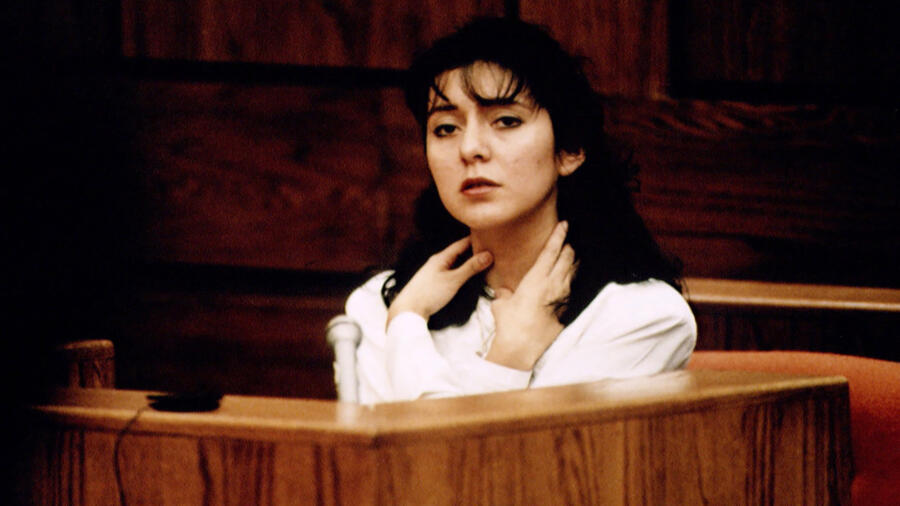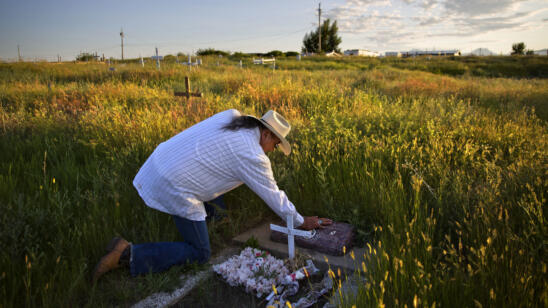While taking a break from gardening in her father’s backyard, Barbara Coombes found his collection of child pornography, sitting in a box on his dining-room table. Then the 51-year-old British woman went into his living room and slit his throat with the blade on her shovel.
It wasn’t just that the photographs were repulsive; they also reminded Coombes of the years of sexual abuse and rape she’d suffered at his hands. Some of the photos were of her as a child.
After her confession and trial, the judge on her case, Timothy King, gave her a nine-year sentence, saying he “did not accept she acted in self-defense” but “accepted she killed while suffering from post-traumatic stress disorder and severe depression as a result of…abuse at the hands of [her] father.”
[Stream episodes of Accused: Guilty or Innocent? in the A&E App.]
This explanation of violent crime—which Harvard Law School professor Alan Dershowitz critically calls the “abuse excuse” in a book of the same name—has been used by defendants in courtrooms for more than century.
A&E True Crime looks at some of the most famous cases of abused people fighting back, sometimes with deadly results.
Name: Lorena Bobbitt
Crime: Malicious Wounding. Cut off her husband’s penis with a kitchen knife.
Claiming revenge for: Repeated rape and physical abuse by her husband.
Sentence: None. Acquitted of charges on the grounds of temporary insanity.
Perhaps the most salacious “abuse excuse” case, the 1993 unmanning of John Wayne Bobbitt at the hands of his wife Lorena Bobbitt (now Lorena Gallo, her maiden name) captured public attention. In the late night hours of June 23, the 23-year-old wife crawled into bed with her husband at their Manassas, Virginia home and dismembered him with a 12-inch knife, then drove away with the penis, throwing it into a field next to a 7-Eleven.
The police found the penis after she called 911 to report her deed. It was later successfully reattached.
Gallo would allege that the butchering had been inspired by marital rape, saying that Bobbitt had forced himself upon her only hours prior to her crime. During her trial, she elaborated on his mistreatment, noting that he had also physically battered her over the years.
Psychologists in the case were divided about her claims of temporary insanity. A psychiatrist for the defense, Dr. Susan Feister, claimed Gallo suffered “brief reactive psychosis” as a result of her rape, causing her to be momentarily overcome by an “irresistible impulse” to fight back. A court-appointed psychologist, Evan Nelson, said Gallo suffered from severe depression, but that she was in control of her actions and that it was “goal-directed behavior.”
The jury sided with Gallo, acquitting her of all charges. For his part, Bobbitt also went to trial—for marital sexual assault. He, too, was acquitted.
Name: Angelina Napolitano
Crime: Murder. Used an axe to kill her husband while he slept.
Claiming revenge for: Physical abuse and being forced into a life of prostitution.
Sentence: Death
An Italian immigrant to Canada, in 1911 Angelina Napolitano killed her husband Pietro Napolitano after years of abuse. Angelina claimed that her marriage was filled with torment, during which time Pietro stabbed her with a pocket knife and pressured her to work as a prostitute, even while six months pregnant with their child.
On the afternoon of April 16, 1911, as Pietro slept, Angelina struck him with an axe four times to the neck and head, killing him.
The judge who presided over the case, Justice Byron Moffatt Britton, ruled that any history pertaining to the “battered woman” defense was inadmissible in court, saying “if anybody injured six months ago could give that as justification or excuse for slaying a person, it would be anarchy complete.”
The jury convicted Angelina, but recommended that the judge show leniency. Instead, Britton sentenced her to hang, prompting widespread public outrage, both in Canada and abroad. Less than two months later, her sentence was commuted to life imprisonment; she was freed on parole in 1922, 11 years after her original death sentence.
Name: Francine Hughes
Crime: Murder. Lit her ex-husband aflame while he slept.
Claiming revenge for: Years of marital abuse.
Sentence: None. Acquitted of charges on the grounds of temporary insanity.
In a case that would later be dramatized in the Farrah Fawcett TV movie “The Burning Bed”, 29-year-old Francine Hughes killed her ex-husband, James Hughes, with a gas can and a book of matches on March 9, 1977. It was a violent climax to what had been a years-long tumultuous relationship.
James—who lived with Francine and their four children, despite the couple being divorced—had beaten her that afternoon. She called the police and two officers came to the scene, but said they were unable to do anything since they hadn’t witnessed the assault and ultimately left.
James then threatened Francine with a knife in front of their children and forced her to have sex with him.
At trial, the defense brought clinical psychologist Arnold Berkman to testify on behalf of Francine’s temporary insanity. Berkman said the defendant “experienced a breakdown of her psychological processes so that she was no longer able to utilize judgment…no longer able to control her impulses…[and] unable to prevent herself from acting in the way she did,” ultimately concluding that she was “not the kind of person who could plan a murder” and not a criminal.
After a five-hour deliberation, the jury sided with the defense.
Related Features:
‘Silence Is Not an Option’: Lorena Gallo Tells Her Story in ‘I Was Lorena Bobbitt’
The Twisted Reasons Some Husbands Kill Their Wives


